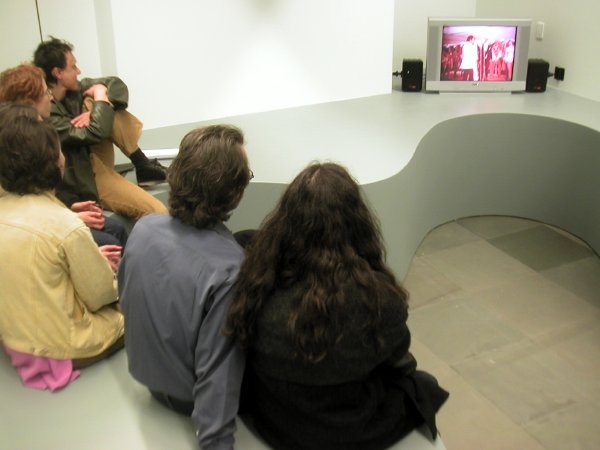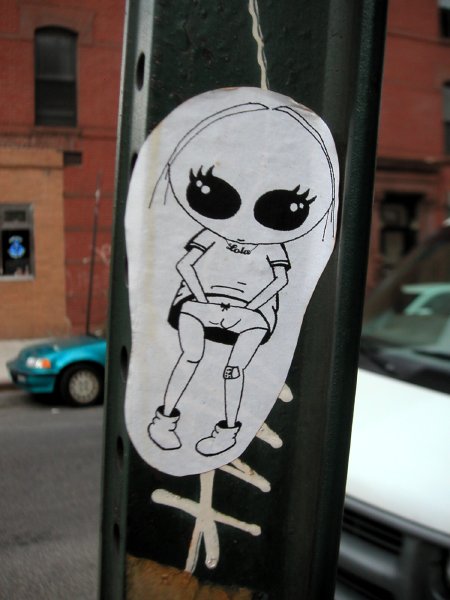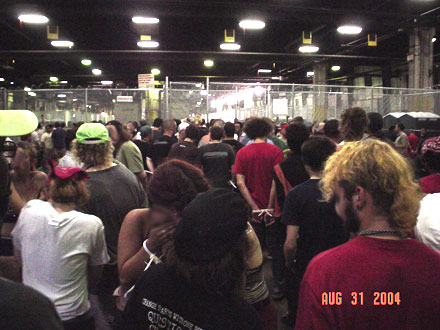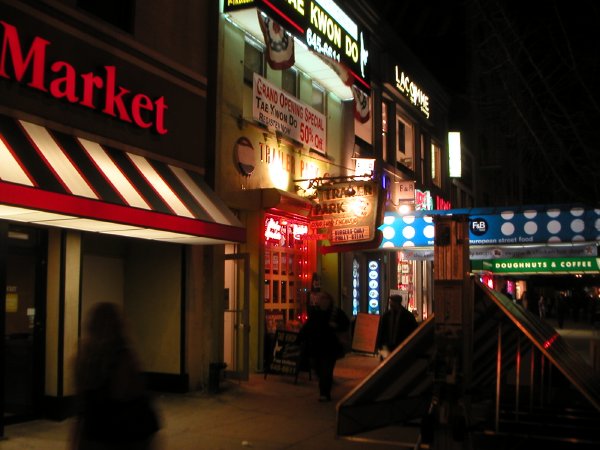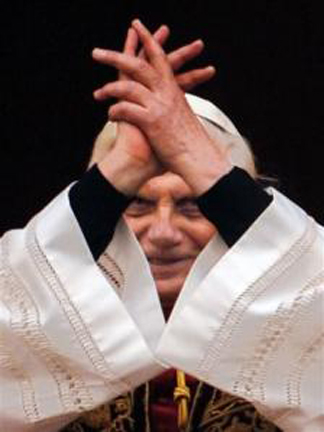
how do you say "booga booga!" in ten languages?
In an email with the subject line, "My encounter with Pope Benedict XVI," a friend and awesome activist colleague of mine reminds us today that our outrage over what Josef Ratzinger represents has a history, including one very much in our midst. The following paragraphs are an excerpt from Michaelangelo Signorile's first book, "Queer in America: Sex, the Media and the Closets of Power," published in 1993.
[The event described here occurred on January 27, 1988. I will forever be grateful to the new pope for being so integral to my development.]
One protest that was announced was an upcoming zap of Josef Cardinal Ratzinger, the German prelate who was head of the Congregation for the Doctrine of Faith. He had written a paper for the Vatican in which he said that homosexuality was "intrinsically evil" and a "moral evil." Cardinal Ratzinger had said the church had to fight the homosexual and fight against legislation that "condoned" homosexuality.
The Ratzinger appearance was at St. Peter’s, a church known for its modern architecture, at Citicorp Center...When I arrived, the place was packed. It was in a big amphitheater that looked more like the United Nations General Assembly chamber than a church. This wasn’t going to be a Catholic mass; St. Peter’s wasn’t even a Catholic Church. Ratzinger may have been a religious figure but he was also a political leader, especially since he was the church's antigay crusader, here to fight against gay civil rights legislation. The church wanted him to speak in a slick, modern, secular-looking space, free of ornate and intimidating religious décor and adornment. It made the gathering accessible and open to people of all faiths and political persuasions.
Ratzinger sat at the altar, along with Cardinal O'Connor and several other prelates. Judge Robert Bork, the conservative Supreme Court nominee who'd just been rejected by the Senate, sat in the front row. Mrs. William F. Buckley, Jr., was there too, as was an incredible array of Upper East Side women, the upper crust of New York's Catholic Society. There were prominent Wall Street businessmen and local government officials. And rows and rows of nuns, brothers, and priests, perhaps the heads of orders and parishes. I began to feel very small – I hadn't seen so many priests since Catholic school.
I looked for protesters, but I couldn't see anyone with a sign or a T-shirt. I wondered for a few moments if anything was really going to happen. I had decided to go there strictly to watch, to check out how these people operated when they conducted these demonstrations. As for myself, I didn't know the first thing about protesting and I still wasn't sure about it. I certainly didn't like the idea of getting arrested.
...Ratzinger took the podium and began to speak. As soon as he finished his first sentence, a group of about eight people to the left of the crowd leaped to their feet and began chanting "Stop the Inquisition!" They chanted feverishly and loudly, their voices echoing throughout the building. The entire room was fixated on them. Activists suddenly appeared in the back of the church and began giving out fliers explaining the action. Two men on the other side of the room jumped up and, pointing at Ratzinger, began to scream, "Antichrist!" Another man jumped up, in one of the first few rows near the prelate, and yelled, "Nazi!" All over the church, angry people began to shout down the protestors who were near them; chaotic yelling matches broke out.
It was electrifying. Chills ran up and down my spine as I watched the protestors and then looked back at Ratzinger. Soon, anger swelled up inside me: This man was the embodiment of all that had oppressed me, all the horrors I had suffered as a child. It was because of his bigotry that my family, my church -- everyone around me -- had alienated me, and it was because of his bigotry that I was called "faggot" in school. Because of his bigotry I was treated like garbage. He was responsible for the hell I'd endured. He and his kind were the people who forced me to live in shame, in the closet. I became livid.
I looked at Cardinal O'Connor, who had buried his head in his hands, and I recognized the man sitting next to him. It was O'Connor's spokesman and right-hand man, Father Finn, who had been the dean of students back at my high school, Monsignor Farrell. A vivid scene flashed in front of my eyes: The horrible day when I was in the principal's office talking to the principal, the guidance counselor, and the dean, the day they threw me out because I was queer. I looked back at Ratzinger, my eyes burning; a powerful surge went through my body. The shouting had subsided a bit because some of the brothers had gotten in front of the room to calm the crowd. The police had arrived and were carting away protestors.
Suddenly, I jumped up on one of the marble platforms and, looking down, I addressed the entire congregation in the loudest voice I could. My voice rang out as if it were amplified. I pointed at Ratzinger and shouted: "He is no man of God!" The shocked faces of the assembled Catholics turned to the back of the room to look at me as I continued: "He is no man of God -- he is the Devil!"
I had no idea where that came from. A horrible moan rippled across the room, and suddenly a pair of handcuffs was clamped on my wrists and I was pulled down....
...I was excited the see something in the New York Post the next day besides the gossip columns: a headline – "Gays Rattle Pope's Envoy" – next to a photo of an anguished Cardinal Ratzinger.
I joined the ACT UP media committee.
One year later Signorile and I both participated, along with thousands of others, in the 1989 "
Stop the Church" action. One of the most important catalysts for its success was our community's anger over Ratzinger's 1986 letter to the bishops of the Catholic church, "
On the Pastoral Care of Homosexual Persons."
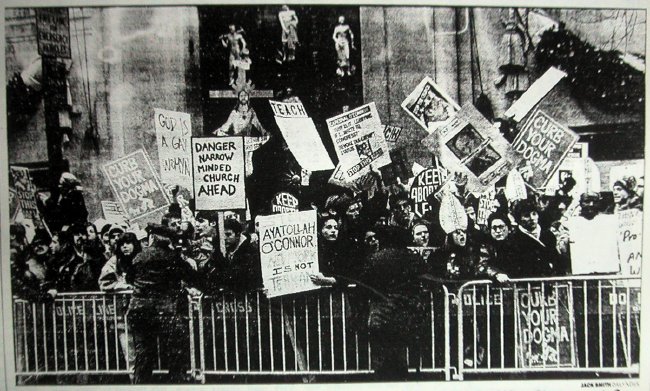
outside St. Patrick's Cathedral, December 10, 1989
[image at top by Domenico Stinellis from the Associated Press via Robert Boyd; lower image is that of a Jack Smith photo on the front page of the Daily News copied from my archives]


